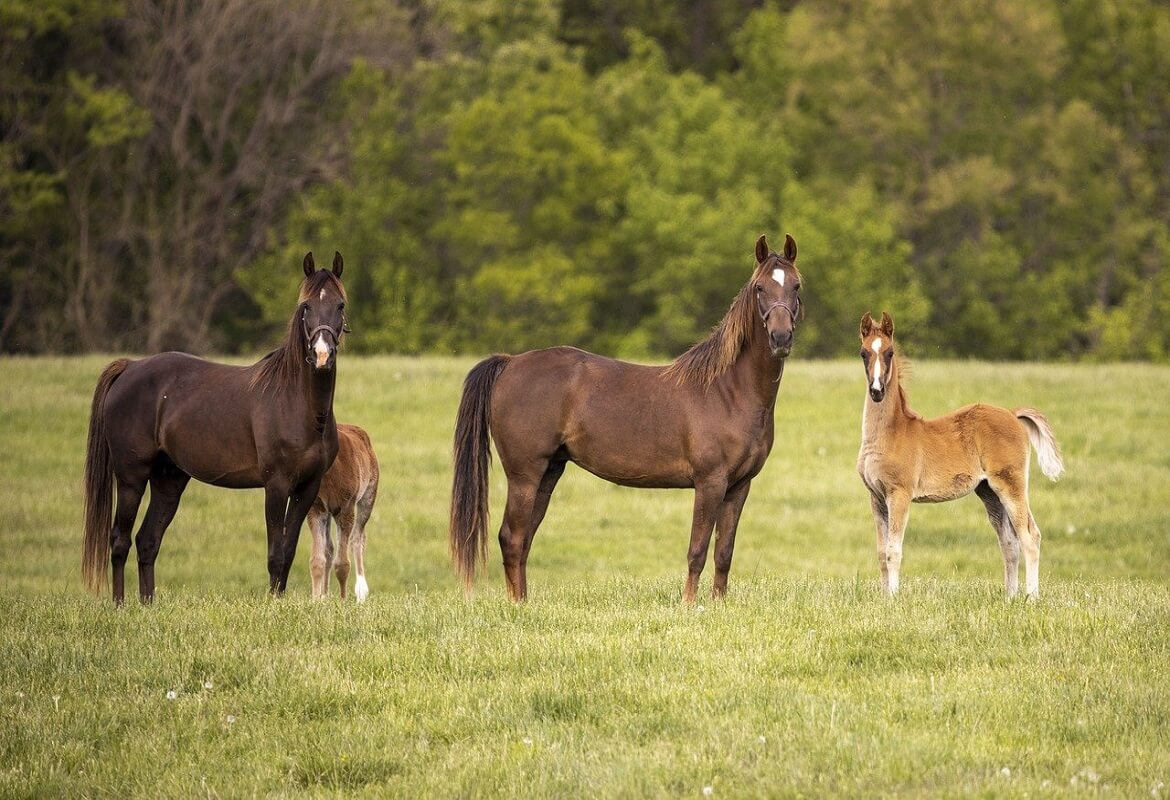How the mare gives birth
The parturition of the mare presents itself as a fascinating yet complex event. During gestation, mothers show signs that indicate the approach of foaling, such as weight gain and swollen udders. Read on to find out about the various stages, as well as the care and attention needed before, after and during childbirth.
Gestation and the signs not to be underestimated
.
During gestation, the mare carries her young for a period of about 11 months. At the end of this period, certain signs are visible that indicate the mare’s approaching foaling. One of these signs is the increase in weight of the mare, due to the growth of the foetus she is carrying. In addition, the mare’s udders swell and become more sensitive. You may also notice a change in the gait of the mare, which becomes slower and clumsier due to the extra weight.
It is important to carefully monitor these signs in order to be ready at the time of foaling and to ensure proper care for the mare and her newborn foal.
The various stages of mare birth: from contractions to birth
.
The farrowing process in mares consists of several important moments. When the mare is ready to give birth, she may show signs such as agitation and frequent movement, followed by a period of rest. During parturition, the mother gets into a crouching position and begins to contract. The foal is then expelled through the mare’s vulva. This process can take from a few minutes to several hours.
It is essential that both the breeder and a trusted veterinarian are present during the mare’s foaling. In this way, she can be closely monitored, it can be ensured that everything is proceeding correctly, and action can be taken in the event of complications.
The care and attention after the foal’s birth
Even after foaling, the mare requires special care and attention to promote the well-being of both mother and foal. First of all, it is important to ensure that the foal is able to breathe on its own and that it begins to feed on its mother’s milk. In addition, it should be considered that the mare may need additional dietary support to recover the energy lost during foaling.
After the mare has given birth, a clean and safe environment must also be provided for both mother and foal to avoid infections and injuries. In addition, it is advisable to subject both to regular veterinary check-ups to ensure that they are in good health and that any problems can be addressed promptly.

Birth of the mare: some conclusions
.
As we have seen, foaling is an exciting and delicate moment, also as far as our equine friends are concerned. To be able to be present at the birth of the mare, avoiding late nights and delays that could be to the disadvantage of both mother and foal, you can consider our foaling alarms. Discover our state-of-the-art foaling alarm system. Take advantage of even more cutting-edge technology, implemented to fully meet the needs of horse breeders.
